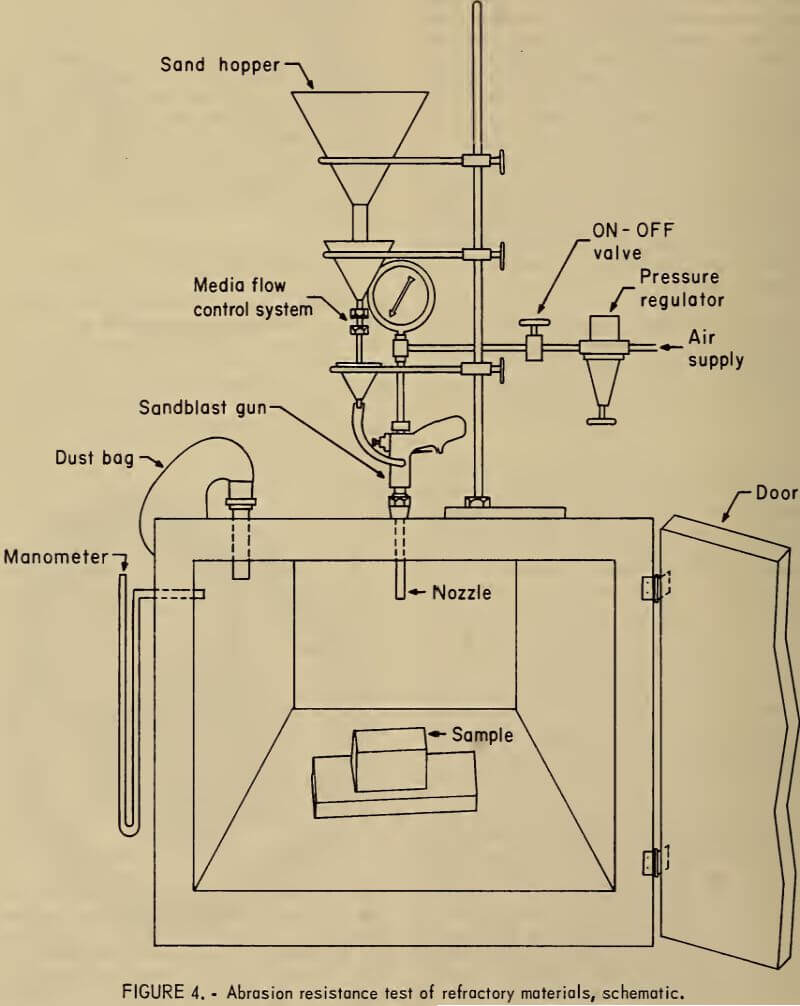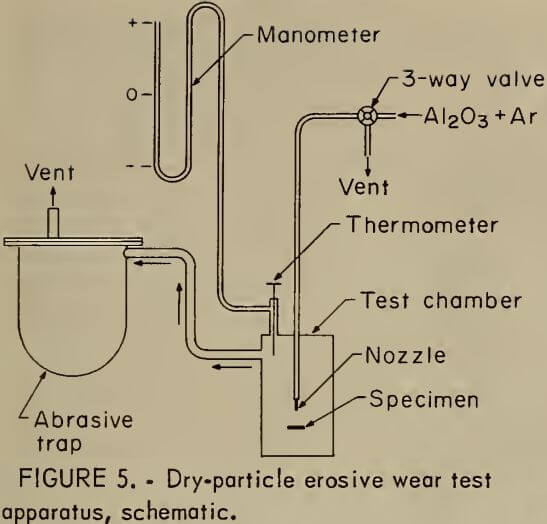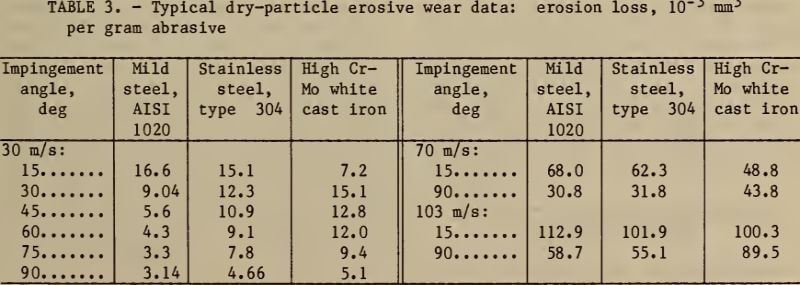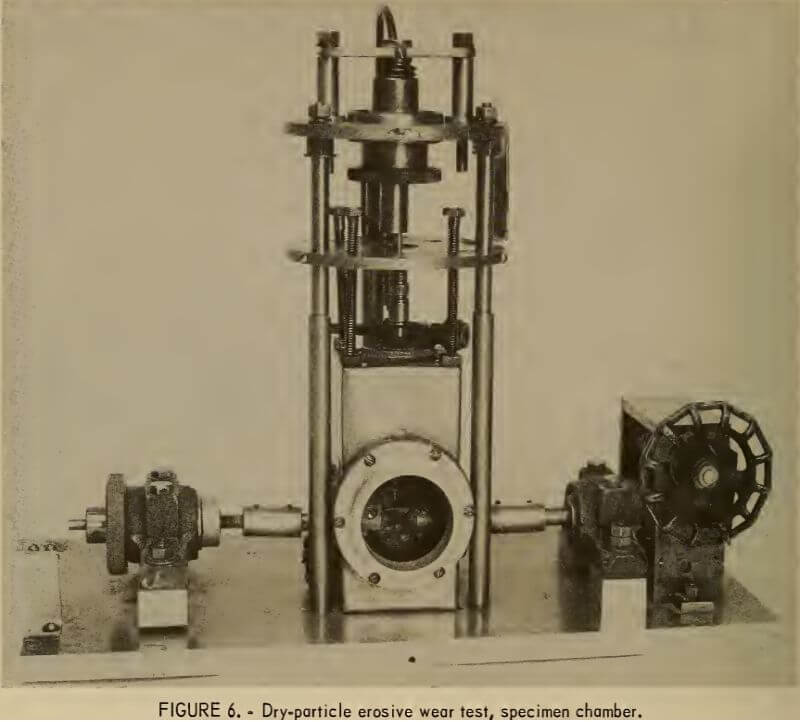Table of Contents
Dry-particle erosive wear can be classified as low-stress, two-body wear, the same type as in the preceding test. It simulates the wear conditions that occur in pipes, cyclones, and other equipment that carry fly ash or other particulate matter in a gas stream. A standard practice for conducting a dry-particle erosive wear test has been developed by the ASTM G.2 committee on erosion and wear. This practice may be used in the laboratory to measure the solid-particle erosion of different materials and has been used for ranking solid-particle erosion values of materials in simulated service environments. Actual erosion conditions involve particle sizes, velocities , and environments that vary over a wide range in equipment such as cyclones, dust collectors, etc. Although one laboratory test cannot simulate the many conditions under which erosion may take place, data obtained over a range of particle velocities and impingement angles can help in the selection of wear- resistant materials.
Dry-Particle Equipment and Specimen
The essential components of the apparatus are shown in figure 5. The specimen is mounted in a chamber on a tiltable table to provide a range of impingement angles . The specimen chamber is shown in figure 6. An abrasive material (normally 50-µm, angular Al2O3) is carried by argon (or some other gas) through flexible tubing. The gas-solid mixture exits the hose through a nozzle that consists of a tungsten carbide tube, 1.5 mm in ID by 50 mm long. The abrasive particles and


gas are mixed and fed by an S. S. White model H Airbrasive unit. Mixing is accomplished within the Airbrasive unit by feeding particles from a pressurized container to a mixing chamber mounted on a vibrator. An orifice in the container bottom controls the flow of particles into the gas stream. The particle flux is a function of the voltage applied to the vibrator, and the velocity is a function of the gas stream pressure. The particle velocity is calibrated by a rotating double-disk device described by Ruff and Ives, and particle flux is calculated from the weight of abrasive collected in a given time.
A novel feature of the Bureau’s apparatus is its ability to collect the abrasive used during a test run. Other investigators’ apparatuses rely on pre-weighing the abrasive or collecting the abrasive during a blank run. In the Bureau’s apparatus, the abrasive passes from the specimen chamber to a filter where it is collected. A manometer and a thermometer are used to measure the pressure and temperature of the specimen chamber.
Dry-Particle Procedure
Particle velocity and flow are measured and adjusted to proper conditions before specimens are tested. The specimens are polished through 400-grit abrasive, cleaned, and weighed to the nearest 0.1 mg. After a specimen is mounted in the proper location and orientation in the apparatus, it is subjected to particle impingement for 10 min. The specimen is then removed, cleaned, and reweighed, and the weight loss is calculated. The specimen volume loss is calculated by dividing the weight loss by the density of the specimen. The filter and specimen chamber are weighed before and after each run to determine the weight of abrasive used.
Dry-Particle Typical Results
Table 3 lists some typical test results for the erosive wear of 1020 steel, 304 stainless steel, and white cast iron.

Note.—50-µm-diam Al2O3 particles carried by argon, 1.5-mm-diam nozzle

The data are expressed as the average volume loss of specimen per gram of abrasive. The table shows the effect of particle velocity and impingement angle on the wear of the specimens. At all three velocities, the high Cr-Mo white cast iron erodes less than the mild steel and stainless steel at a 15° impingement angle but erodes more than the mild steel and stainless steel at 90° impingement.
